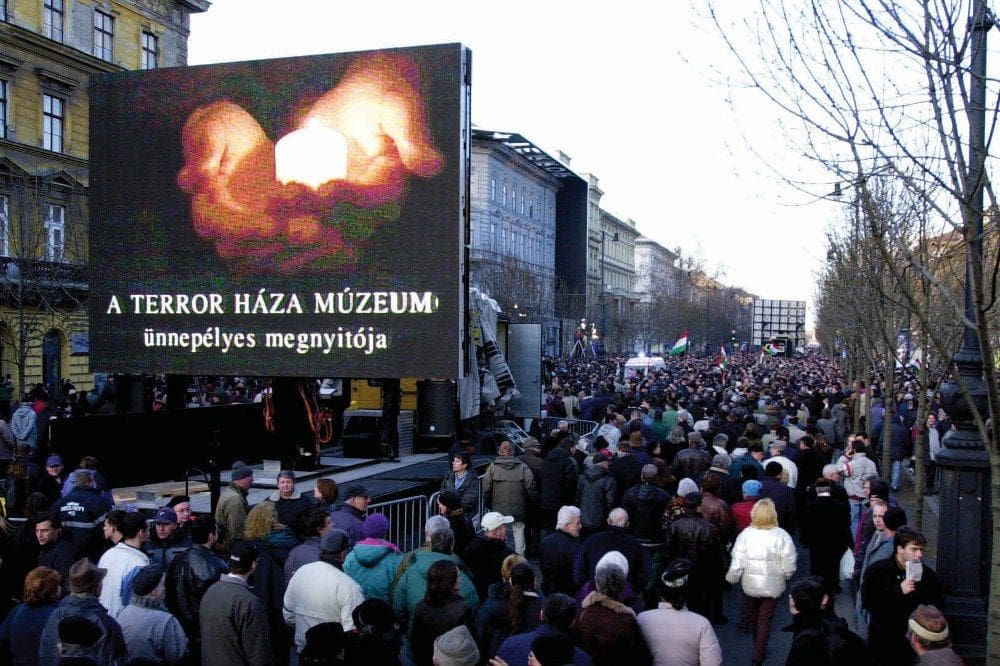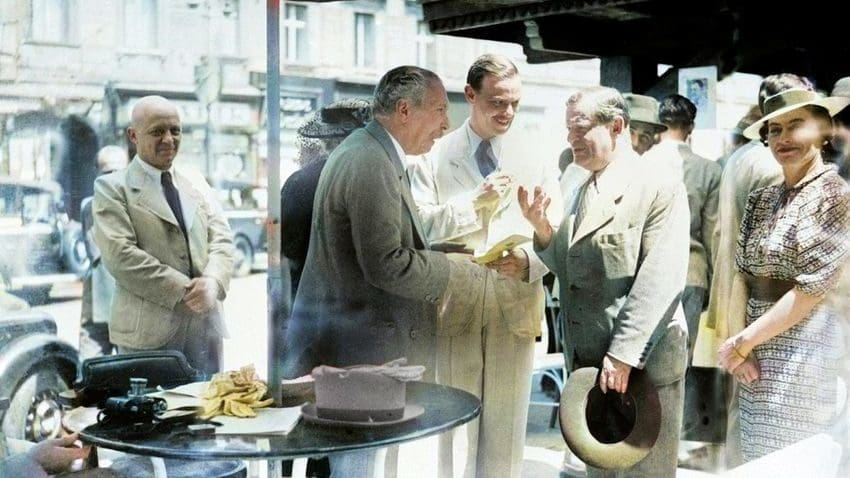Hungarian writer and critic Lajos Hatvany, the ‘last patron’ of Hungarian literary modernism, was the founder of the 20th-century Hungarian literary journal Nyugat (West), which had been operating for two years at the time of our story, together with Hungarian writers and intellectuals Hugó Ignotus and Miksa Fenyő. In the summer of 1910, he wrote a programmatic apologia for the journal, taking issue with the frequent objections of fictitious figures. With a witty solution, he presented six accusations and took them to pieces, including the supposed inner-Budapestism, anti-traditionalism, and non-Hungarianism of the writers and poets of the new literary movement, imitating foreign customs and seeping into Nyugat.
A Century-Long War
Hatvany interpreted the last accusation as follows: ‘a young lord told me that the aristocracy, which is essentially conservative, cannot be enthusiastic about the new Hungarian literature’, even though ‘in this new life, everything must be renewed, even…even conservatism’. Undoubtedly! In its absence, the conservatism of the writing contemporary magnates ‘is certainly not a conservatism that makes you think for a minute’, he deemed witheringly. Then he added something worth quoting at length:
‘I dread to think of the day when conservatism will be attacked by people like Vicomte D’Haussonville, the Comte de Vogue, Brunetière, Barrés, Bourget, and Lemaitre, who will make me waver for days in my views, even if I withstand their arguments with all the resistance of my nature…Fearful men! And yet with some perverse aesthetic longing, I call them to us. I want to be charmed by their logic, their style, their knowledge—and then I want to devastate them…We are just waiting, waiting for an opponent that suits us—I’ll put the correct expression here—that is worthy of us.’
The barely concealed self-conceit of these lines seemed very well founded, since cultural conservatism was slower, more contingent, and more unevolved, if only because of its situational energy, than the bitingly self-conscious current that famous turn-of-the-century Hungarian poet Endre Ady called ‘the strong, spring alarm of our souls’ in one of his programme verses.
A hundred years ago, the vanguard of progress consisted of several parallel structures. In addition to the emblematic journal of Hungarian literary modernism, which already indicated the direction of progress with its title, the Hatvany article also mentioned the left-liberal workshop of sociology, the journal Huszadik Század (Twentieth Century). The latter was under the direction of Hungarian social scientist Oszkár Jászi, as was the progressive half of Hungarian Freemasonry a few years later, and then the Civil Radical Party, founded in 1914. Moreover, it was part of the same wider left-liberal network, which also included a multitude of freethinkers’ forums and pressure groups. Cultural institutions, newspapers and magazines, academic authors and tastemakers—in other words, they had all the tools of cultural hegemony in their hands, even before they had political power! Their strategy was to do just that.
By the time these organisations had come into being in the fifteen years between the turn of the century and the outbreak of World War I, and had gradually permeated each other in human–organisational terms, as well as society, or at least the middle classes,
they had already partially appropriated cultural power.
In contrast, it was only in 1911 that the incumbent power launched a (counter)journal titled Magyar Figyelő (Hungarian Observer), founded by Ferenc Herczeg, the ‘writer prince’ of the time, and István Tisza, Prime Minister of the Kingdom of Hungary. The latter certainly wrote the introduction to the first issue of the paper, which read as follows: ‘Magyar Figyelő addresses the Hungarian intelligentsia, which is called upon to lead the nation, and which today is itself fragmented and partly disoriented.’ The lesson could already be drawn at the time: in culture, a delay of ten years means an almost irrecoverable disadvantage.
Progressive Hegemony
The very diverse yet unified progressive paradigm—from free thinking to doctrinarianism, from secularism to atheism, from bourgeois radicalism to communism—spread first among the intelligentsia, but then for a shorter (1918–19) and finally a longer (1945–89) period, it came to dominate government and even to dictate both politically and culturally. By then, of course, there was no longer a sense of controversy, as in Hatvany’s letter, written at the turn of the century with a bourgeois attitude. What’s more, György Lukács, who had gone from being a generous aesthete of his banking family to a decimating People’s Commissar in a close decade’s time, wrote the following two weeks after his appointment in April 1919: ‘Politics is only a means, culture is the end!’. The first half of the century-long war for cultural hegemony was fought with an underground cultural struggle, and for the same length of time, it continued with the means of power.
The regime change of 1989–90 offered the hope that the political–economic and socio-cultural system would change. The legacy of communism and the nature of the Western integration framework meant that progressive hegemony would not, especially overnight, turn into some kind of conservative hegemony, but many believed in intellectual and cultural equality. This would have required two things.
Firstly, the self-limiting attitude of the old post-communist and allied new neo-liberal elite, which had jealously guarded its positions in the information, publishing, and entertainment industries; and even multiplied through privatisation that accompanied the regime change, and which could hardly be trusted. This condition could not be met simply because the Western power centres continued to work in the cultural field with those who had gained experience in the era of dictatorship. Secondly, a complete bourgeois–national layer of cultural creation and dissemination would have been needed immediately, together with the full range of tools needed to do this. This, however, took a long time, since the continuity so necessary for conservative thought was rendered meaningless by the ruptures of tradition in 1944–45, and the non-existent cultural structures (such as prizes, periodicals, publishers, and schools) also had to be replaced, while the intellectuals who ran them had to wait for their organic emergence. In short,
the system changed with the regime change, but the era, i.e. the era of progression, remained.
After four years in power, the return of the Socialists in 1994, with the addition of the Free Democrats, was a real shock for the right wing, which, albeit, had another go between 1998 and 2002. Although the legendary statement of László Kövér, a founding member of Fidesz, that ‘we were in government, but not in power’ was specifically aimed at the period of civilian government at the turn of the millennium, the genius of the saying can be extended to the eight years before and after, too. In other words, between 1990 and 2010, the twenty years following the regime change, progressive forces ruled the roost.
The strongest power has been the one that has controlled the national mood and the social imagination with the entail of setting standards and goals: for five cycles with cultural power and for three cycles with the associated governmental power.
Cultural Change of Era
The economic, political, and broadly understood cultural hegemony of left-liberal forces made it impossible for right-wing party politics to develop and for an organically developing national intelligentsia to assert itself. The latter, in addition to the quite occasional foreign translations, could initially draw mainly on two domestic sources: the heritage of the third generation of folk writers and the denominational legacy of the bourgeoisie, as well as the great work of Hungarian–American Catholic philosopher, historian, and political theorist Thomas Molnar, occasionally returning home from America, which, however, reached us only with considerable delay. Overall, this was a good start, but the structures were still lacking. They had to be created, or, at best, still re-established, as the journal Magyar Szemle (Hungarian Review) in 1992, founded by István Bethlen, Prime Minister of Hungary, back in 1927.
At the first Hungarian conservative conference in 1993, Hungarian historian László Tőkéczki suggested that we should make use of as much of the conservative–liberal or liberal–conservative consensus of 1867–1938 as possible, and in his 1998 article on the tenth anniversary of the journal Hitel (Credit) he called it a fortunate coincidence that ‘popular thought is adjacent to the bourgeois tendencies of value conservatism’.
In the 1990s, several intellectual platforms were already active (such as the Association of Christian Intellectuals, the Association for Hungarian Civic Cooperation, or the Batthyány Society of Professors), and in the 2000s, the possibility of broader socialisation also emerged. Before the 2002 election, the House of Terror Museum opened its doors, reviving historian Mária Schmidt’s concept of history and resulting in a narrative paradigm shift.

After the election defeat philosopher András Lánczi drew the lessons in his book titled Conservative Manifesto, calling on ‘the right…to openly commit to and express its commitment to some form of conservatism’. While Fidesz steadily expanded during its eight years in the opposition between 2002 and 2010, when it formed civic circles, allied with the KDNP, and won the social referendum it initiated, the conservative spirit also shifted into high gear. In parallel with the effective work of the two hardened right-wing generations, a third, young conservative generation also emerged: the journal Kommentár (Commentary) was launched in 2006, the Tranzit festival in 2009, and so did a series of internet forums (Jobbklikk, Konzervatórium, Mandiner) at the end of the decade as well.
The change of government in 2010 and everything that followed was a conservative revolution, as, on the one hand, as Viktor Orbán put it, a ‘revolution in the polling booths’ indeed took place. On the other hand the entire Hungarian state was re-founded, namely with the nation-, work-, and family-oriented Fundamental Law. Of course,
this has not left the ever-so-close and increasingly fruitful relationship between politics and the spirit untouched either.
On the one hand, the ‘Peace March’, first launched in 2012 and organised with the popular–national support of the government, has been repeated several times in the last ten years. Besides, the Fidesz–KDNP coalition won a two-thirds legislative mandate three more times until 2022. On the other hand, especially in the 2018–’22 cycle, an active process of culture building began, manifested in the national management of strategic cultural infrastructure, in the anticipated construction and reconstruction works, and in the multiplication of civic-national initiatives. Thanks to the latter, a multitude of foundations, institutes, schools and training courses, publishers, journals, festivals, and online sites are now shaping a dynamic ‘conservative ecosystem’ in which there is room for all those who share the national maximum. This is the guarantee that the national–conservative ethos will bring about a new conservative era that will coincide with a broadening of the national consensus as well.
Canon Law
Three decades after the aforementioned first conservative intellectual muster, a new gathering took place in 2022, with a conference volume published for this year’s Festive Book Week, entitled Hungarian Conservatives after Thirty Successful Years. In his foreword, the organiser and editor Attila Károly Molnár says that, unlike their Western friends, ‘Hungarian conservatives are successful in many ways’, and are united but still diverse, while the increasingly homogeneous ‘progression seems confused’.
His words are easily backed up by a look at the official and unbiased catalogue of the 94th Festive Book Week, which is representative and easily searchable. Among the volumes included, one needs only browse through the dedicated left-liberal and avowedly national–conservative books, which convey a world view—let us say ideology—and are therefore mostly political and/or historical. The former group, with great goodwill, has produced only five such books, of which only economist Zoltán Pogátsa’s work titled Sustainable Economy or Social Collapse seems noteworthy. The latter, on the other hand, has published three times as many, i.e. fifteen identity-forming titles, through six organisations: the XXI Century Institute, the Mathias Corvinus Collegium (MCC), the National Memory of the World Committees, the Pallas Athéné Books, the Rubicon Institute, and the Századvég Foundation. Among them are necessary translations and enduring works by Hungarian authors such as András Lánczi’s political philosophy work titled Political Redemption, geographer Norbert Csizmadia’s lavishly illustrated Geovision, National Bank Governor György Matolcsy’s two-volume book report, as well as the conference volume mentioned above.
It is no coincidence therefore that when MCC became the 98.41 per cent owner of Libri through a natural market process that did not even begin today, the left-wing of the writing community immediately sounded the alarm.
Namely, fiction is still predominantly in the hands of the urban cosmopolitan authors, who are also witnessing the rise of a younger generation whose 80–90-page poetry collections’ blurbs include questions such as ‘Can the Virgin Mary’s eardrum be considered a hymen?’. While in 2023, we can repeat Hatvany’s words written in 1910, since we too are ‘waiting for an opponent that suits us—I’ll put the correct expression here—that is worthy of us’.
Related articles:
Click here to read the original article.








